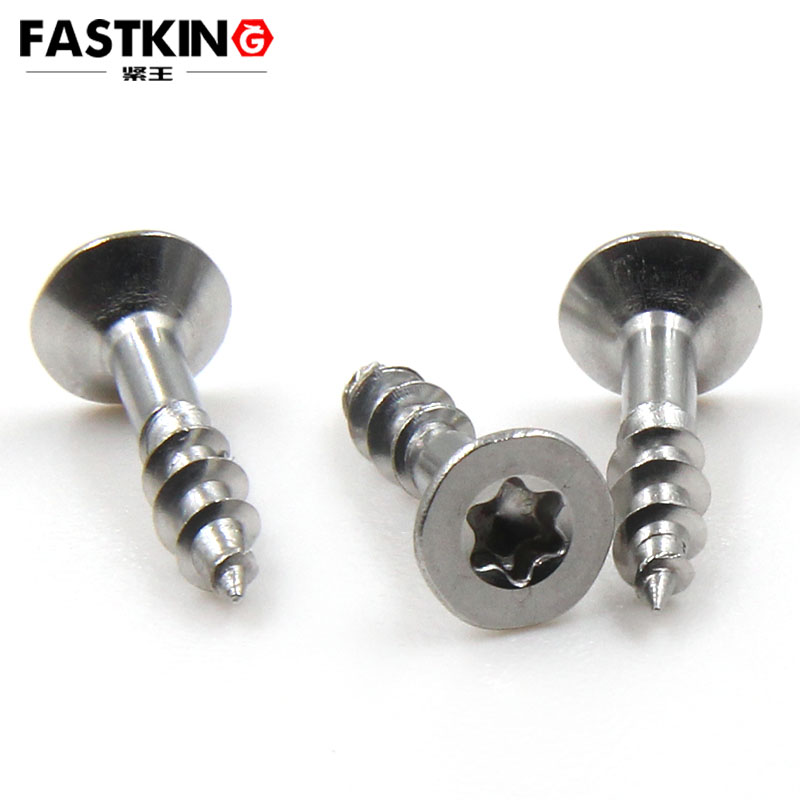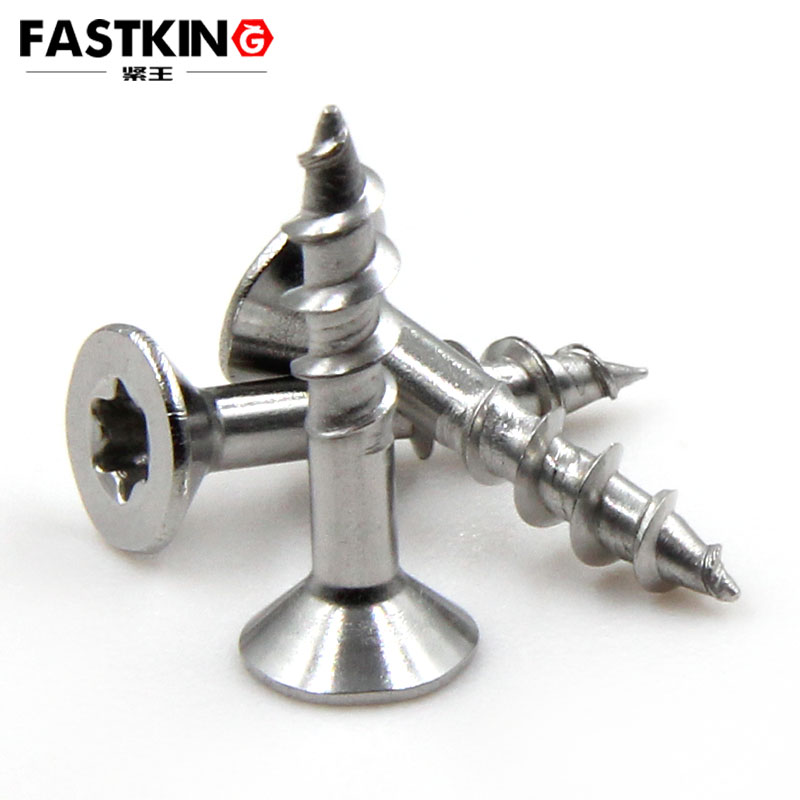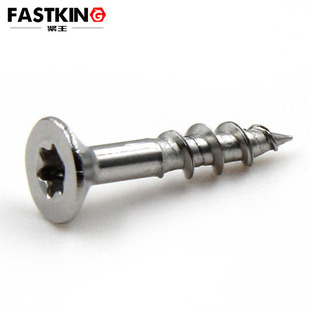- Torx screw,torx machine screw,torx self tapping screw
- sales@jlfastener.com
torx flat head deck screw
Torx tapping screw
torx flat head deck screw
- Description:In modern architectural decoration and industrial floor construction, the stability, flatness, and long-term reliability of flooring are of paramount importance. The performance of the screws connecti
In the field of floor installation, traditional floor nails often have issues such as protruding heads, easy loosening, and low installation efficiency, which affect the aesthetics and service life of the floor. In contrast, countersunk-head internal hexagon fast-thread self-tapping screws, with their customized structure of "countersunk head + internal hexagon socket + fast thread", perfectly meet the installation needs of solid wood floors, composite floors, and laminate floors. They not only enable efficient and rapid assembly but also ensure the floor remains flat and stable for the long term, making them the preferred fasteners to replace traditional floor nails in modern floor construction. Tailored to the characteristics of wood and the pain points of installation scenarios, these screws not only improve construction efficiency but also significantly reduce the risk of floor cracking and warping in the later stage, providing key support for the quality of floor engineering.
From the perspective of structural design, every detail of this screw is precisely matched to the needs of floor installation. The "countersunk head" design is crucial for ensuring a flat floor surface — the head has a 120° conical shape, and when paired with the pre-drilled counterbore in the floor, it can be completely embedded into the wood after installation, with no exposed nail head. This avoids the discomfort underfoot and cleaning difficulties caused by the protruding heads of traditional floor nails. For example, in the installation of solid wood floors, after the countersunk screw is embedded into the mortise-tenon structure of the floor, only a tiny trace of the internal hexagon socket remains on the surface, which is barely noticeable without a dedicated tool. This not only preserves the overall aesthetics of the floor but also prevents wear to the screw from daily foot traffic. Additionally, the conical pressure-bearing surface of the countersunk head evenly distributes the fastening pressure across the wood surface, avoiding wood cracking due to excessive local pressure, and is particularly suitable for soft solid wood floors such as pine and fir.

The "internal hexagon socket" structure addresses the issue of operational reliability in floor installation. Floor installation is mostly carried out in dry indoor environments, but wood surfaces may have wood chips and dust. Traditional slotted or Phillips-head screws are prone to "slippage" (tool slipping out of the slot) due to foreign matter jamming, which damages the screw head or the wood counterbore. The internal hexagon socket forms a tight engagement with a dedicated internal hexagon wrench through its hexagonal curved notch, achieving a torque transmission efficiency of up to 98%. Even if there is a small amount of wood chips in the slot, it can still stably transmit the fastening force (usually controlled between 2-4N·m), avoiding rework caused by operational errors. Furthermore, the internal hexagon socket requires a dedicated tool for disassembly, which prevents non-professionals from prying the floor arbitrarily and reduces man-made damage during later maintenance. It is particularly suitable for floor installation in commercial spaces such as shopping malls and office buildings.
The "fast thread" is the key to improving floor installation efficiency. Traditional floor nails mostly have fine-thread designs, which require repeated rotation to drive into wood, taking about 10-15 seconds to install a single nail. In contrast, fast-thread self-tapping screws adopt a large-lead thread (e.g., M4 specification with a 1.0mm pitch), and their driving speed is 2-3 times faster than ordinary fine-thread screws, reducing the installation time per screw to 3-5 seconds. In large-area floor installation scenarios, such as the construction of 100㎡ laminate floors, using fast-thread screws can save approximately 2-3 hours of working time, significantly reducing labor costs. At the same time, the thread profile of the fast thread has been optimized, with rounded thread crests. When driven into wood, it gently cuts the wood fibers to form a tightly fitting thread pair, avoiding loosening of the threaded hole caused by forced tearing of wood fibers. Especially in the connection of the base material layer of multi-layer composite floors, the fast thread can firmly lock wood layers of different densities, preventing interlayer separation due to long-term foot traffic.
In terms of material and performance adaptability, countersunk-head internal hexagon fast-thread self-tapping screws have been specially optimized for floor use environments. Mainstream products are made of 1022 low-carbon steel (with galvanized or nickel-plated finishes). The hardness of low-carbon steel is controlled between HV280-320, which not only ensures the cutting ability of the fast thread but also prevents wood splitting due to excessive hardness. Galvanized finishes (mostly blue-white zinc or colored zinc) can improve the moisture resistance of the screws. In floor installation in humid southern regions, they can effectively prevent wood staining caused by screw rust — test data shows that galvanized screws have a rust rate only 1/5 that of ordinary black oxide screws when used in an environment with 85% humidity for 5 years, avoiding floor base material contamination due to screw rust. Some high-end products also have a wax coating on the thread surface, which further reduces driving resistance, minimizes wood heating, and protects the paint or wear-resistant layer on the floor surface.

From the perspective of practical application scenarios, this screw is suitable for various floor types. In the installation of solid wood floors, it is used to fix the floor to the joists — the fast thread can quickly penetrate the floor tenon and drive into the joists, while the countersunk head design ensures a flat floor surface. In the installation of composite floors, for lock-and-fold structures, screws can be driven into the side counterbores to enhance the connection strength of the locks and prevent floor warping caused by thermal expansion and contraction. In the installation of outdoor anti-corrosion wood floors, countersunk-head internal hexagon fast-thread self-tapping screws made of 304 stainless steel can resist outdoor moisture and UV erosion, avoiding floor loosening caused by screw rust and failure. For example, in the construction of anti-corrosion wood floors on home balconies, 304 stainless steel screws combined with the fast-thread design not only enable quick installation but also withstand long-term rain erosion, ensuring the floor remains stable for more than 10 years.
However, to fully leverage its advantages in floor installation, selection and construction must follow the wood adaptation principle. During selection, the appropriate specification should be chosen based on the floor thickness: for 12-15mm thick laminate floors, the M3×16 specification is recommended to ensure the screw can penetrate the floor and drive 5-8mm into the joists; for 18-22mm thick solid wood floors, the M4×25 specification is required to avoid weak connections due to short screws. During construction, an electric screwdriver with torque adjustment function must be used, and the torque should be set to 2.5-3.5N·m to prevent wood cracking caused by over-tightening. Meanwhile, the depth of the counterbore must be precisely controlled — usually 0.3-0.5mm deeper than the height of the screw head to ensure the nail head is completely embedded without damaging the floor surface.
The emergence of countersunk-head internal hexagon fast-thread self-tapping screws has promoted the upgrade of floor installation from "extensive nailing" to "precision fastening". It not only solves the aesthetic and efficiency issues of traditional floor nails but also ensures long-term floor stability through structural optimization, becoming a key component for improving the quality and construction efficiency of floor engineering. As consumers' requirements for floor aesthetics and durability increase, and with the popularization of prefabricated decoration, the application of this screw in the field of floor installation will further expand, providing a higher-quality fastening solution for ground engineering in modern homes and commercial spaces.


